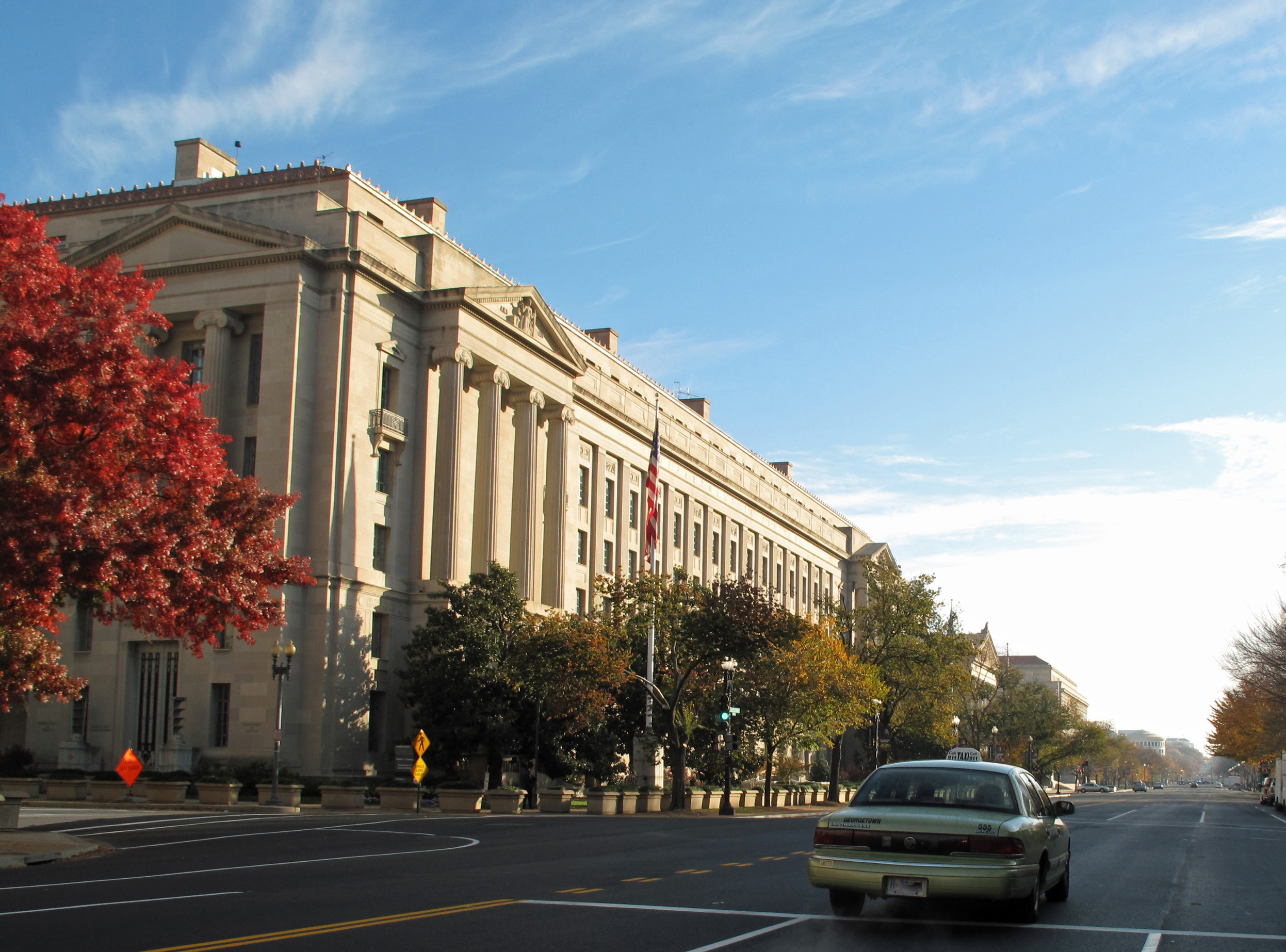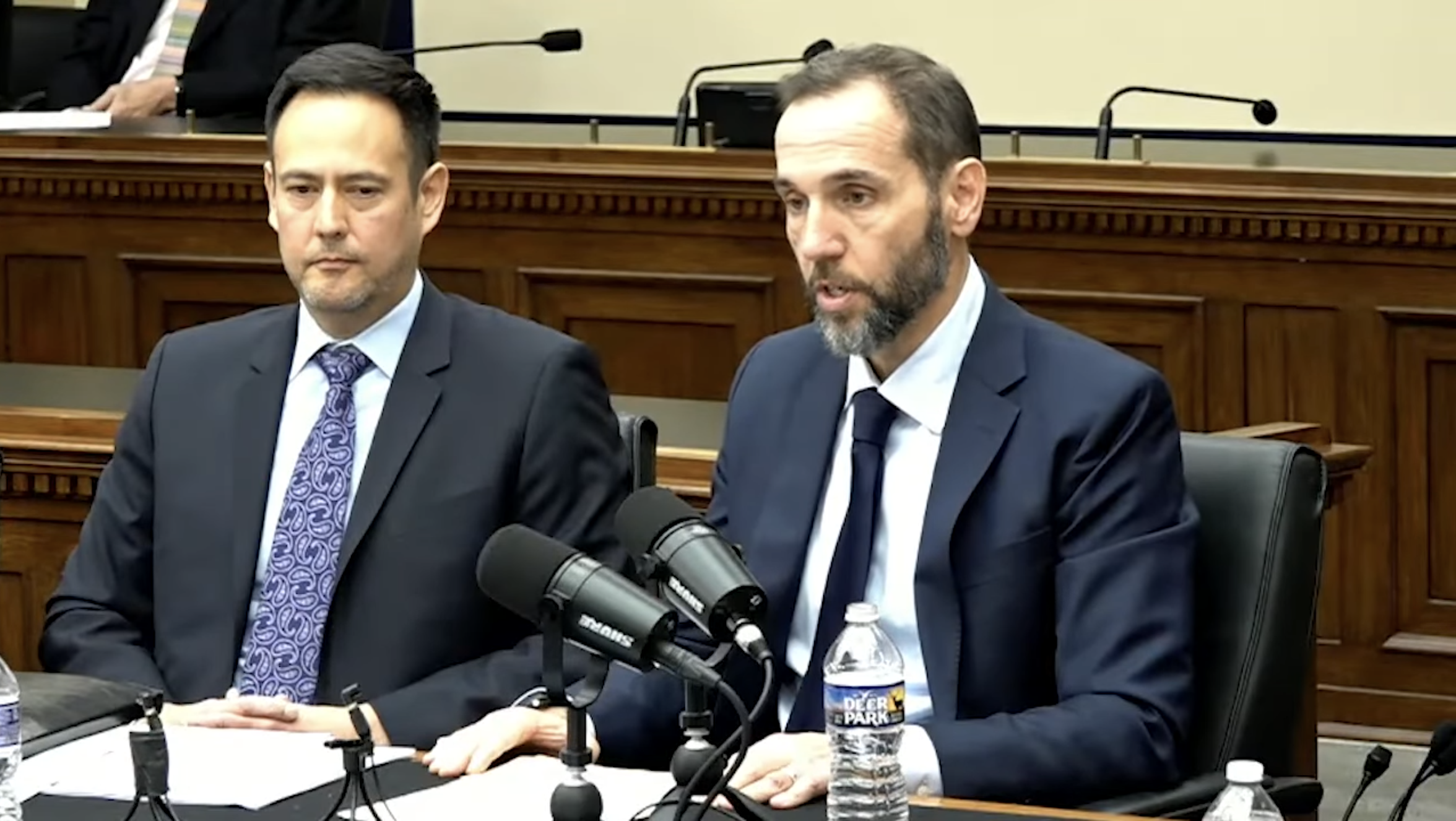Justice Department Reports Reflect Shift in Thinking About Police Reform
The first police findings reports from Biden’s Justice Department reflect a substantive advance in the department’s police reform work.

Published by The Lawfare Institute
in Cooperation With

The Civil Rights Division of the Justice Department has heralded what could be a new era in police reform. The division’s report of its two-year investigation of the Minneapolis Police Department, released in June, was different from the findings reports issued under the Obama administration. So was its report of its Louisville Metropolitan Police Department investigation, issued in March. Together, these differences indicate a shift that seems less about any idiosyncrasies of policing in either place and more about an evolution in the division’s thinking about how to eliminate patterns of misconduct by law enforcement. This change has potentially transformative implications not only for the division’s police “pattern-or-practice” enforcement work, but for anyone working to eliminate systemic police misconduct and create a more equitable and effective public safety system.
Even without breaking new ground, the Minneapolis and Louisville reports would have been significant. They are the first police findings reports issued by the Justice Department under the Biden administration. During the Trump administration, the Civil Rights Division issued a single findings report, regarding the sole policing investigation it initiated (of a single unit of the Springfield, Massachusetts, police department). By contrast, the division opened eight police misconduct investigations in the first two years of the Biden administration. Police consent decrees were effectively prohibited under the Trump administration, with the Justice Department going so far as to refuse to follow through on an Obama-era agreement to negotiate a consent decree to resolve its investigation of the Chicago Police Department.
Therefore, these recent reports serve as confirmation that the Civil Rights Division is again open for business, including publicly documenting its policing investigative findings. As with past police investigations, the abuse these reports document is chilling, partly in its frequency and perhaps even more so in conveying how casually abuse can occur in policing. Both reports document widespread violations of the Constitution in police use of force, as well as discriminatory policing. The Louisville report, prompted in part by the police killing of Breonna Taylor, also found a pattern of illegal searches based on invalid warrants and in violation of “knock and announce” requirements. All of this was to be expected and in line with the division’s work before the Trump years.
But as someone who was closely involved with the Civil Rights Division’s pattern-or-practice policing work during the Obama administration, and who has watched as the division’s expertise and effort was effectively sequestered while the rest of the world was reimagining public safety, it is clear that the division needed to do more than simply pick up where it left off at the end of the Obama administration. To remain relevant and useful, the division needed to catch up. These reports indicate that, in many respects, it has done so.
The Minneapolis and Louisville findings reports indicate that the division has been busy learning not only from its own work implementing and enforcing consent decrees, but also from the work of researchers, advocates, and scholars outside of the department. As a result, the division has developed new and better ideas about how to ensure sustainably lawful policing. This thinking is reflected throughout the findings reports but can be organized into three buckets: (a) a recognition of the need to broaden our approach to public safety; (b) the need to be explicit that the Constitution, as interpreted, does not adequately protect against police abuse; and (c) acknowledging the import of protecting the ability of outside observers—whether formal members of the press or simply citizen observers—to document police conduct and have access to information about what police do.
These new reports are the Justice Department’s first to make clear that a broader approach to public safety is needed to “eliminate” patterns of police misconduct, the explicit objective of the statute authorizing the Civil Rights Division’s pattern-or-practice work. Based on its analysis of 911 calls and incident reports in both cities, the division concludes that some calls regarding mental health or other behavioral health crises simply “do not require a law enforcement response” and that when officers respond unnecessarily to such situations, the results are “often ineffective and harmful” and even fatal. The Minneapolis investigation report supports this finding by comparing poor results when police respond with the results achieved by the Minneapolis Behavioral Health Response teams. The Louisville report similarly documents how police, who are the “primary and generally the sole responders” to behavioral health calls in Louisville, “frequently fail to engage in well-known tactics to successfully de-escalate people in crisis.” As a result, the Justice Department found, nearly a quarter of the uses of force in Louisville involved a person in a behavioral health crisis, and a large amount of that force is not just avoidable, it violates the Constitution. The Louisville report similarly contrasts the unskilled and frequently illegal public safety response to a person in a behavioral health crisis to the public safety response to someone experiencing a physical health crisis, where individuals receive “a prompt and often life-saving response by appropriately trained EMT professionals.”
The reports’ articulation of a need for a broader public safety response is not limited to the behavioral health context. The Minneapolis report notes a need to pursue “approaches to addressing crime other than through policing,” such as using violence interrupters and public health prevention strategies, in order to move away from policing tactics that have, without fail, produced harmful racial disparities. The report notes that Minneapolis has begun pursuing these strategies in recent years, but it makes clear that the city needs to do more to center this approach in its public safety response. Similarly, the Louisville report notes that “other city agencies play an important role in public safety,” before discussing how the city has not “implemented and sustained these important public safety initiatives.” Both reports also explicitly note that these cities, as well as their police departments, potentially are liable under the Americans with Disabilities Act for their anemic response to community health needs. The Minneapolis report further includes a long discussion of how the citywide dispatch center contributes to unnecessary police responses by failing to properly assess the nature of the call and dispatching the proper type of public safety responder.
Although previous Justice Department reports, most notably in Baltimore, have addressed the need for a better police response to people in mental health crisis, together, these new findings reports affirm key insights in recent efforts to reimagine public safety: Cities as a whole need to step up to provide a more varied and broadly effective public safety net and can no longer operate under the illusion that they can eliminate abusive police practices by focusing solely on policing.
The second striking element of these reports is their explicit discussion of how constitutional provisions, at least as interpreted through Supreme Court holdings, provide inadequate protection against ineffective and racially discriminatory policing. One example is the reports’ discussion of “pretext” stops. The Supreme Court held unanimously in Whren v. United States that pretext stops, in which officers use a minor violation as an excuse to look for evidence of another crime, are reasonable under the Fourth Amendment, regardless of whether they may have been motivated by racial stereotypes or bias. The Minneapolis report notes that while pretext stops may be lawful under the Fourth Amendment, they nonetheless create “opportunities for biased enforcement,” given how easy it is to commit a legal infraction. The Louisville report similarly describes how reliance on “pretextual enforcement”—especially by Louisville’s Violent Incident Prevention, Enforcement and Response street crimes unit, also known as the VIPER unit, and in predominantly Black neighborhoods—helps explain the racial disparities in policing outcomes that the Civil Rights Division found in that city. The Justice Department has previously recognized that pretext stops lead to patterns of unlawful policing, and previous consent decrees, including in Baltimore and Ferguson, Missouri, have included limits on their use. But neither of those reports even used the word “pretext.”
Similarly, while constitutional criminal case law provides only a narrow, almost begrudging allowance for treating children differently than adults, the Minneapolis report takes issue with the failure of the police department’s use of force policies, training, and practice, to account for the age of people with whom police interact. The report notes that there is no minimum age for handcuffing or guidance on using particular weapons, like stun guns or pepper spray, against minors. The report discusses particular interactions with youth that illustrate the “unnecessarily aggressive tactics” that officers use when interacting with young people, and how traumatizing this can be. After having a gun pointed in his face by a police officer, despite the lack of any evidence of wrongdoing, one teenager told Civil Rights Division investigators: “I thought it was going to be my last night.” Another incident, in which the aggressive reaction of a plainclothes officer to a Black teenager accused of taking a five dollar burrito without paying that prompted 911 calls that a teen was being accosted by a “‘wacko who has a gun,” left the young man with a sense of “‘frustration,’” “‘powerlessness,’” and “‘helpless rage.’” The findings report notes that incidents like these often resulted in Fourth Amendment violations but also separately emphasizes that interactions like these are “unnecessary and harmful” to the “physical and emotional well-being” of youth.
These discussions act as an explicit warning to jurisdictions everywhere that they cannot rely on policies and training that merely adhere to the constitutional “floor” regarding police conduct. This is because, as these findings demonstrate, constitutional regulation of policing is incomplete at best and too often facilitates conduct that is unnecessarily harmful, undermines effective policing, and creates cultures of policing in which patterns of unlawful conduct become inevitable.
Finally, both reports found patterns of First Amendment violations against journalists and members of the public who were protesting, documenting, or critiquing police conduct. Other Civil Rights Division police findings reports have found patterns of First Amendment violations, but these recent reports, particularly the Minneapolis one, in both language and depth, convey a heightened recognition of the need to protect the ability of outside observers to document police conduct and have access to information about what police do.
The Minneapolis report states unequivocally, “The press has a distinct and essential role in maintaining our democracy.” The reports discuss police in both cities arresting or attacking people and destroying their phones in response to nonviolent, constitutionally protected activity. Particularly memorable examples include a journalist losing an eye to a rubber bullet during a protest and an account of police, infuriated at being filmed, pepper spraying a man and throwing his cellphone off a bridge. This stark accounting conveys a heightened appreciation of both the import of police protecting democratic tenets, rather than undermining them, and the fact that the public cannot always rely on police to do so.
The focus on the role that the press and the public play in directly holding police accountable appears to reflect an evolution in the Civil Rights Division’s understanding of how to implement accountability mechanisms and make sure they stick. Indeed, it’s difficult to imagine that the department could have avoided learning this lesson, given the events of recent years. After all, the world would not know what Derek Chauvin did to George Floyd without the video footage, captured by 17-year-old Darnella Frazier, that countered the egregiously inaccurate police report of the incident.
Previous Justice Department police findings reports included substantial emphasis on how internal accountability systems (such as internal affairs divisions) have fallen short. More recent findings reports focused also on the need to develop or improve external or quasi-external oversight mechanisms (such as independent auditors and complaint review boards). But it has become clear over time that these accountability structures are, at best, incomplete. Further, as demonstrated by the completely stalled implementation of the Death in Custody Reporting Act, and the mostly stalled implementation of the National Law Enforcement Accountability Database, a database required by the 2022 Biden executive order on policing (not to mention the failure of the George Floyd Justice in Policing Act), there is no federal calvary on the horizon. Nor can even a fully committed Civil Rights Division be everywhere all at once.
Like the rest of the world, the Justice Department has seen that outsiders, whether professional journalists or happenstance observers, are playing a critical role in ensuring a full and accurate picture of police conduct, creating at least the possibility of illumination and accountability. And reporters and researchers are increasingly filling in for government failings by collecting information about policing and making it available to the public. Some examples of this include the AH Datalytics dashboards, the Invisible Institute Citizens Police Data Project, Mapping Police Violence, the Police Scorecard, the Stanford Open Policing Project, and the Washington Post Fatal Force Database. Community observers and the press cannot do this essential work without the protections afforded by the First Amendment, and the Civil Rights Division’s most recent findings reports reflect that understanding.
It is not yet clear what all of this will mean for the actual work of ensuring equitable and effective policing. The next step for the Civil Rights Division is to negotiate consent decrees with Louisville and Minneapolis. To fulfill its potential, the division’s more sophisticated understanding of how to make police reform work will have to be operationalized and incorporated into those agreements: Measures that facilitate and require a broader public safety response will need to be included; police conduct that is lawful but that causes illegality will need to be constrained; and communities will need to be empowered to directly hold law enforcement accountable, not only through stronger protections of First Amendment rights but also through greater transparency and access to information.
There is a universe, and it could well be ours, in which the Justice Department decides to appease the more retrograde elements of law enforcement rather than let the Civil Rights Division lead real change. But if the department has the audacity to hope that the kind of transformative change that policing desperately needs is actually possible, the Minneapolis and Louisville findings reports could be the beginning of something big.



.jpeg?sfvrsn=96471529_5)

